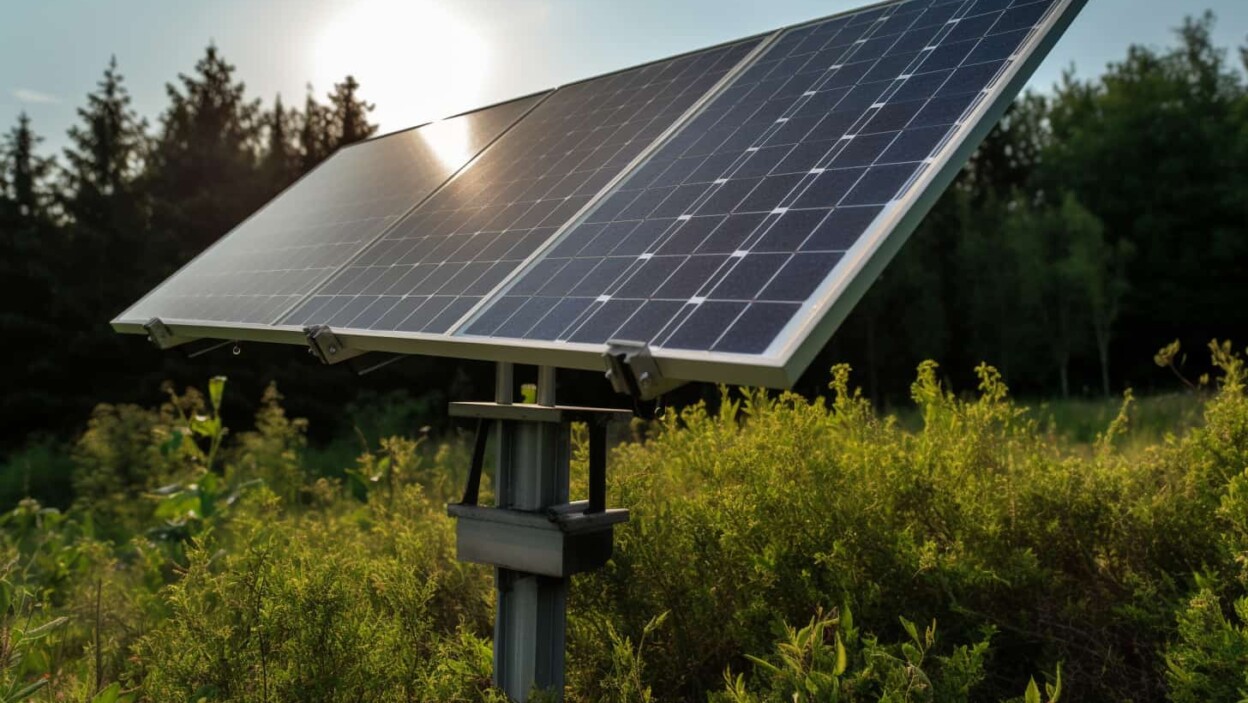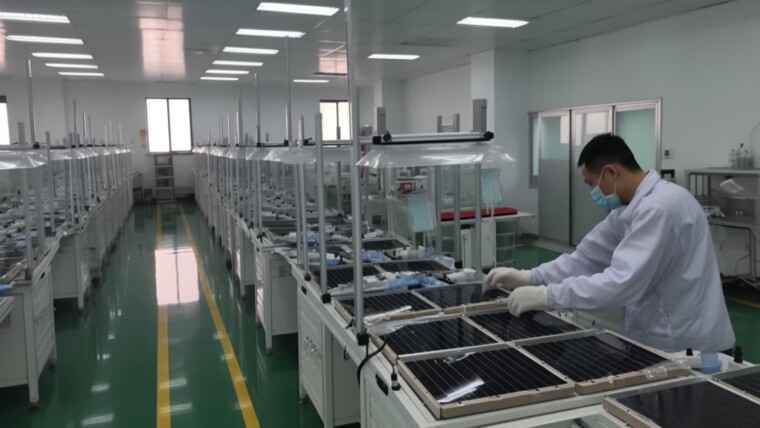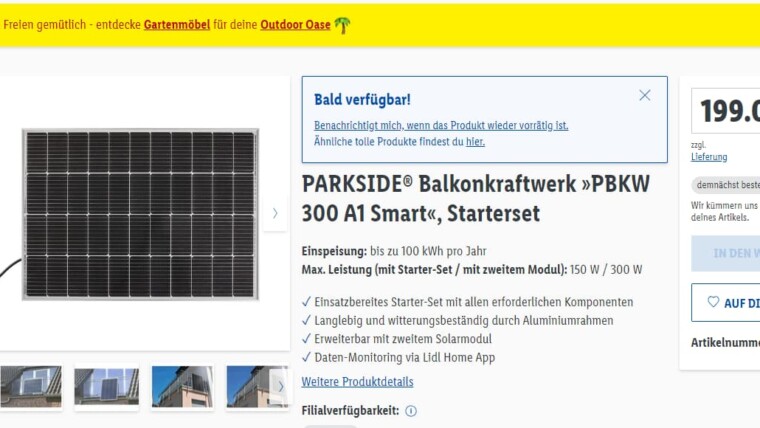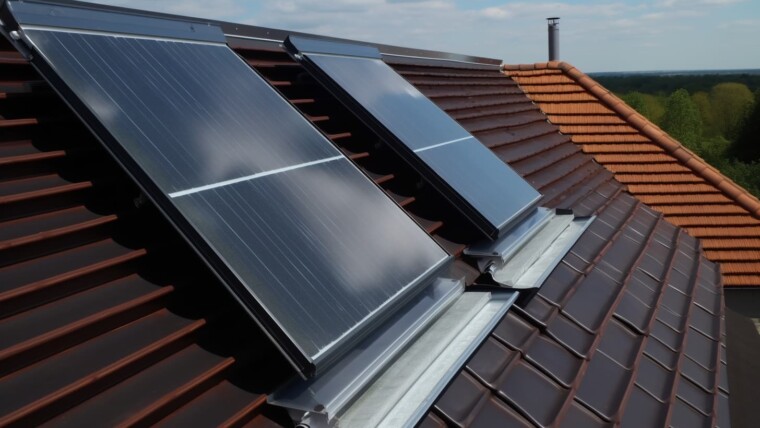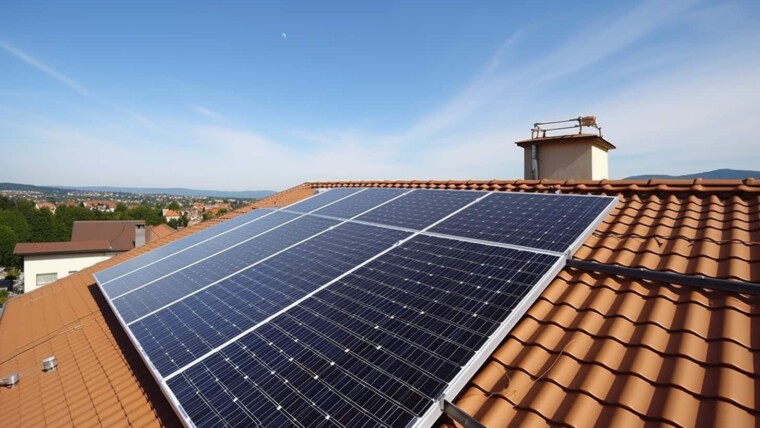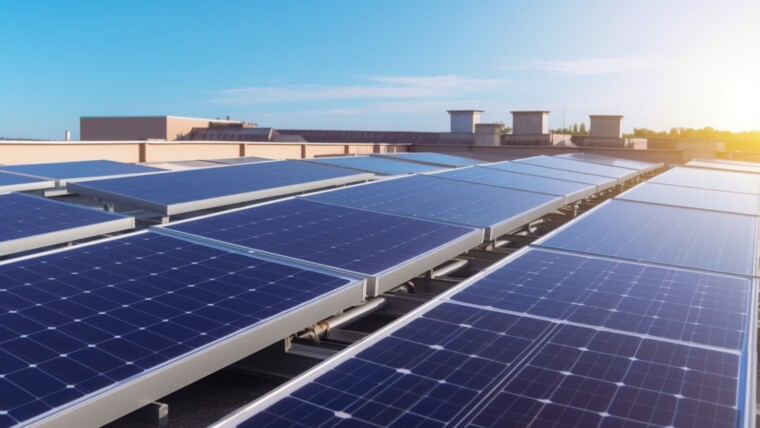More than just an indicator on a label, the power of a solar panel is a decisive factor in determining the profitability of your photovoltaic project, whether you opt for total self-consumption, total resale or self-consumption + resale.
In this practical guide, we'll take a look at the three different "wattages" of solar panels, the criteria for choosing the right wattage to size your installation, the factors that influence panel efficiency, and conclude with a FAQ. We're off!
Understanding the three powers of solar panels
There are three main power levels for solar panels: maximum power, real power and variable power (depending on the weather). Let's take a closer look.
#1 What is the maximum power of a solar panel?
Expressed in watts-peak (Wp) or kilowatts-peak (kWp), the maximum power of a solar panel corresponds to the electrical power produced by the panel under optimal sunlight and temperature conditions. Also known as peak power, it is determined by manufacturers during tests carried out under standardized conditions on a 1 m² base (sunshine of 1,000 W/m², temperature of 25°C and solar spectrum AM 1.5).
The whole point of maximum power is to make it easier to compare the performance of the various solar panels available on the market. Generally speaking, solar panels have maximum power ratings ranging from 250 Wp to over 400 Wp, depending on the cell technology used (monocrystalline, polycrystalline or thin-film) and the size of the panel.
We are here on a power theoretical. As you can see, your photovoltaic system will never reach this maximum power under real-life conditions. To help you see things more clearly, here's a table summarizing the estimated maximum power of solar panels per square meter, depending on the cell technology used:
| Technology | Maximum power (Wp/m²) |
| Monocrystalline | 190 – 210 |
| Polycrystalline | 150 – 180 |
| Amorphous (amorphous silicon) | 60 – 80 |
| Thin films (CIGS, CdTe) | 100 – 140 |
As you can see, monocrystalline solar panels generally have the best conversion efficiency, followed by polycrystalline panels. Amorphous and thin-film panels have lower maximum power ratings, but may be more suitable for certain situations, such as where space is limited or for building-integrated applications (BIPV or building-integrated photovoltaics).
#2 The real power of a solar panel
As the name implies, the real power of a solar panel measures its performance under sunlight and temperature conditions typical of your region. Unlike maximum power, which is measured under ideal laboratory conditions, real power reflects the performance you can expect from your system on a day-to-day basis.
In France, the actual output of a solar panel generally varies between 75 % and 80 % of its maximum power. This difference can be explained by several factors, such as the angle of incidence of the sun, the operating temperature of the panels, shading and the quality of the photovoltaic cell.
#3 The variable power of a solar panel ?
It's important to remember that the electrical output of a solar panel is not constant. It varies with the seasons and the time of day.
For example, a panel will produce more electricity in summer than in winter. This is known as variable power, and refers to the electricity produced by a solar panel as a function of variations in sunshine and temperature throughout the day and year.
To estimate the variable output of a solar panel, simulation models such as PVsyst (developed by the University of Geneva) or SAM (System Advisor Model) can be used, which take into account sunshine, temperature, panel orientation and inclination, as well as the technical characteristics of the system components.
Let's take a concrete example to illustrate the use of a simulation model such as PVsyst to estimate the variable power of a solar panel. Let's say you want to install a 5 kWp photovoltaic system on the roof of your house in the South of France. To get an accurate estimate of your system's energy output, you'll need to enter the following information into PVsyst :
- Location City or region where your home is located.
- Orientation azimuth of solar panels (e.g. due south = 0 degrees, south-east = -45 degrees, south-west = +45 degrees).
- Tilt angle of inclination of solar panels to the horizontal (e.g. 30 degrees).
- Type of panels Model and brand of solar panels you plan to install.
- Peak power of your installation (in this example, 5 kWp).
Once this data has been entered, PVsyst simulates your system's energy production, taking into account solar irradiation, temperature, panel orientation and inclination, as well as the technical characteristics of the components. The software will then provide you with estimates of actual power and annual energy production, helping you to determine whether the proposed installation will meet your energy requirements and profitability targets.
What is the power of a solar panel for 1 m²?
To calculate the power of a solar panel per square meter, divide the panel's rated power (or peak power) by its surface area. Here's the formula to use:
Power per m² = Nominal power (Wp) / Panel area (m²)
Here's how to do it step by step:
- Find your solar panel's power rating: The power rating, also known as peak power, is expressed in peak watts (Wp) and can usually be found on the solar panel's data sheet or product label.
- Find the surface area of the solar panel: Measure the length (L) and width (W) of the solar panel in metres (m) and multiply to obtain the surface area in square metres (m²).
Panel area (m²) = Length (m) × Width (m)
- Calculate power per square metre: Divide the rated power (Wp) by the surface area of the panel (m²) to obtain the power per square metre (Wp/m²).
Power per m² = Nominal power (Wp) / Panel area (m²)
For example, if you have a 300 Wp solar panel with a length of 1.6 m and a width of 1 m, the surface area of the panel would be 1.6 m². The power per square metre would then be :
Power per m² = 300 Wp / 1.6 m² ≈ 187.5 Wp/m²
This means that the solar panel produces around 187.5 peak watts per square metre.
How to choose the power of the photovoltaic installation according to the consumption of the house?
To correctly size your photovoltaic system, you need to base its output on your home's electricity consumption. Here are the steps to follow:
- Estimate your home's annual electricity consumption (in kWh). You can find this information on your electricity bills or by carrying out an energy survey of your home;
- Calculate the annual electricity production required to cover consumption (taking into account the efficiency of the system, which averages 80 %). For example, if your home's annual consumption is 5,000 kWh, the annual production required would be 5,000 kWh / 0.80 = 6,250 kWh;
- Determine the average amount of sunshine in your region (in hours of sunshine per year). This information can be obtained from local weather data or by using online tools;
- Calculate solar panel power requirements by dividing the annual electricity production required by the average insolation (in kWh/h). For example, if the annual production required is 6,250 kWh and the average sunshine is 1,500 h, the power required would be 6,250 kWh / 1,500 h = 4.17 kWp;
- Choose solar panels with a maximum cumulative output equal to or greater than the calculated output requirement. In the above example, you would need to choose solar panels with a maximum total output of at least 4.17 kWp, or more to sell to EDF OA.
Note: one kilowatt-peak (kWp) produces around 900 to 1,400 kWh per year. This estimate will enable you to determine the power you need to cover your consumption.
What are the variables that impact the performance of a solar system?
The efficiency of a solar installation directly determines the amount of energy produced and the savings you make on your electricity bill. So you need to pay particular attention to avoid unpleasant surprises.
To get the most out of your photovoltaic system, it's crucial to understand and optimize the factors that influence its performance:
- Orientation and tilt of the solar panels In France, and more generally in northern hemisphere countries, south-facing orientation maximizes exposure to the sun. The optimum inclination depends on the latitude of the location;
- Shading Shading: shadows cast by trees, buildings or other obstacles can reduce electricity production. A shading study can be carried out to assess the impact of shading on the yield of the installation and determine the best panel configuration;
- Temperature Temperature coefficient: solar panels lose power as the temperature rises. The temperature coefficient, generally expressed as %/°C, indicates the variation in panel output with temperature. It's important to choose solar panels with a low temperature coefficient to minimize heat-related yield losses;
- Component quality Good quality: good quality solar panels and inverters guarantee higher efficiency and a longer lifespan. It's advisable to choose components made by recognized brands and benefiting from various certifications.
FAQ on the power of solar panels
FAQ solar panel power
What is "1 kWp"?
1 kWp (kiloWatt-peak, equal to 1,000 Wp) is a unit for measuring the maximum (theoretical) power of a solar panel under standardized conditions (sunshine of 1,000 W/m², temperature of 25°C and solar spectrum AM 1.5). This is the electrical power produced by the panel when subjected to optimal sunlight.
How much energy does a 1 m² photovoltaic panel produce?
The amount of energy produced by a 1 m² photovoltaic panel depends on its power per m² (Wp/m²) and the average amount of sunshine in the location. For example, a 187.5 Wp/m² panel with 1,500 hours of sunshine per year would produce: 187.5 Wp/m² * 1,500 h = 281.25 kWh of energy per year.
How many solar panels for a 200 m² house?
The number of solar panels required for a 200 m² house depends on the home's electricity consumption and the power of the panels.
To determine the number of panels, you need to divide the required power of the solar panels (calculated according to consumption) by the maximum power of a solar panel. Generally speaking, a 200 m² house can accommodate a dozen solar panels on its roof, representing a surface area of around 20 m².
How much does a solar panel produce in a year?
Under optimal conditions, a solar panel produces between 900 and 1400 kWh per year.

Reda T.
Reda holds a PhD in finance and specializes in renewable energy economics. He combines financial expertise with an interest in sustainability, writing not only on the financing of green projects, but also on more general topics and frequently asked questions in this field.
